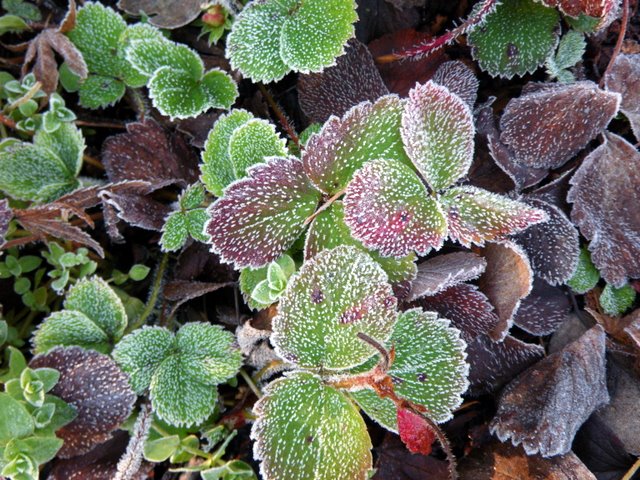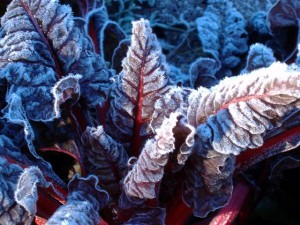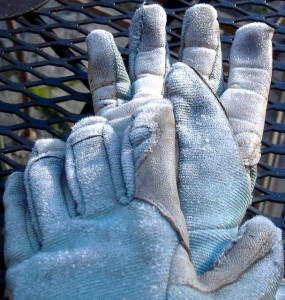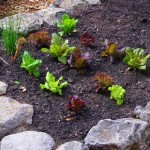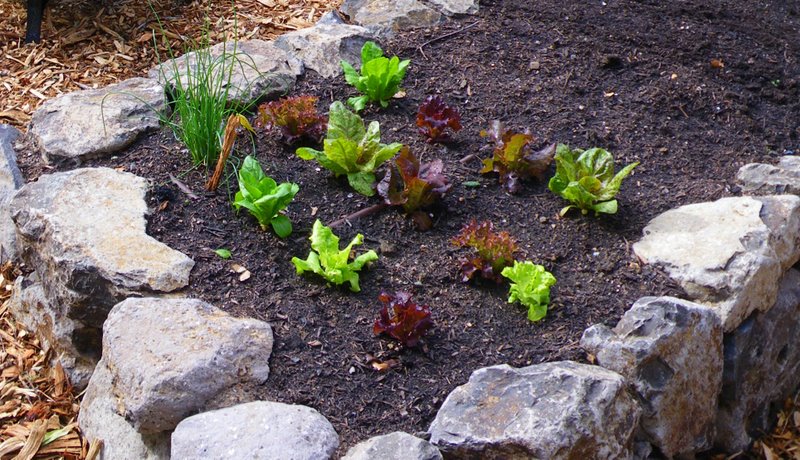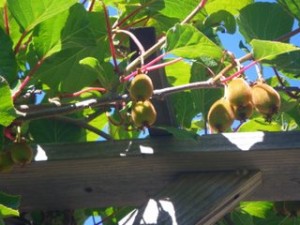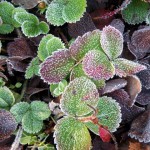
by Avis Licht
Some plants actually like a bit of frost. Knowing what to plant for the winter garden will help you be successful. And all frost is not created equal. A little frost on the plants, like the strawberries in the picture above, doesn’t hurt many plants. Prolonged cold below freezing can cause problems. Be sure to observe your garden for frost pockets as cold settles into lower areas and valleys.
Here’s what you can do if you live in a frosty neighborhood:
1. Choose cold hardy plants for your vegetable garden. These include: chard, kale, spinach, broccoli, cabbage, brussel sprouts, carrots, beets, kholrabi, peas and turnips and some varieties of lettuce. These plants work if there is thaw during the day. If they stay continually frozen, you need to put them in an unheated greenhouse or under hoops that are covered.
2. Make sure the soil is moist before a big frost. Moist soil holds 4 times more heat than dry soil.
3. Cover tender plants with a woven material, blanket or sheet. Preferably not plastic, as this does not protect very well. You can lay the material over the plant, or put up stakes and keep it slightly away from the leaves. Bring the material down to soil level, as the heat rises up into the covered area.
4. Place tender plants in pots and put in protected areas in south facing walls and under eaves, to get reflected heat from buildings. These would include lemon, lime, lettuce and herbs.
Here’s what you shouldn’t do during frosty days:
1. Don’t prune during frosty days.
2. Don’t prune frost damaged plants like trees and shrubs. Leave the damaged tips and buds on the trees and wait until Spring and let the plants start to grow. Otherwise you stand the chance of having the frost do deeper damage.
3. Don’t use chemical sprays that say they will protect your plants from frost. There is no evidence to support these claims.
4. Don’t leave your gloves out to get frosted. They will make your hands cold. I know, I did this.
To find out more about growing in winter you should read these books by Eliot Coleman from Four Seasons Farm in Maine. Winter Harvest Handbook will give you many ideas. Your edible landscape can still produce wonderful food in winter. It may take a little more attention, but can be very rewarding.

